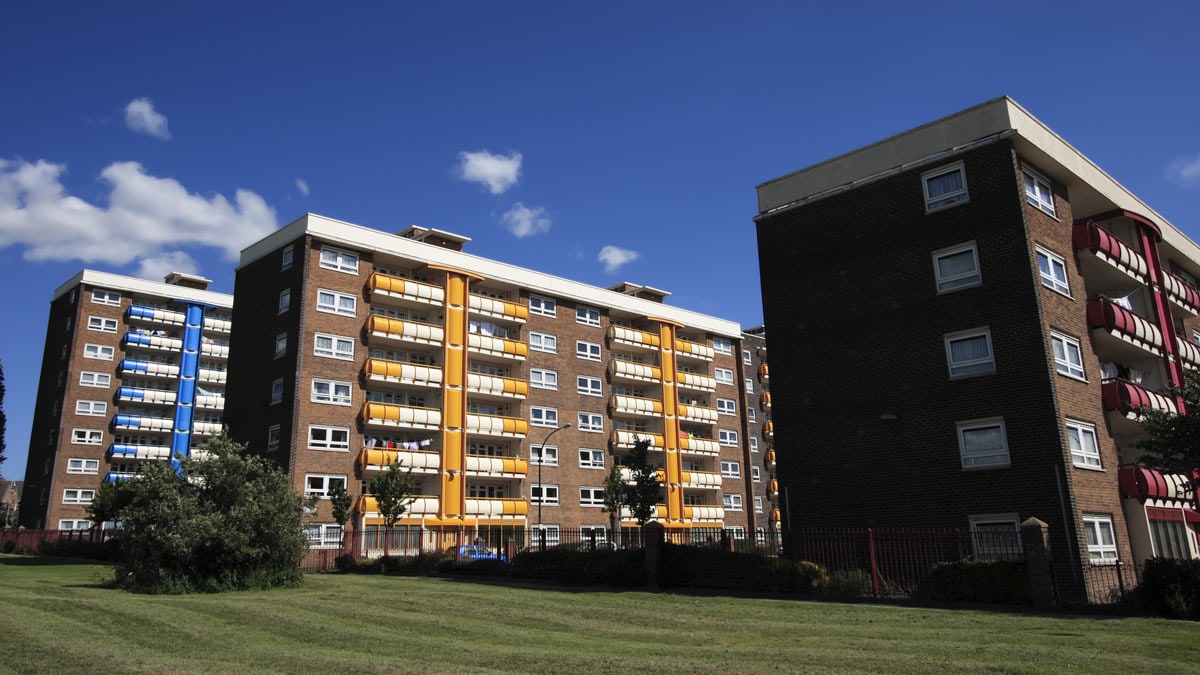Key points
- There is no safe level of exposure to secondhand smoke (SHS).
- The prevalence of exposure to SHS among people living below the poverty level is two times the prevalence among people living at or above the poverty level (47.9% vs. 21.2%in 2013-14).
- There are actions that can be taken to protect people from secondhand smoke.

Inequities in secondhand smoke exposure
Did you know?
Smokefree air policies are important because they protect people who don't smoke from secondhand smoke (SHS), motivate those who smoke to quit, and prevent people from starting to smoke. Right now, however, not everyone in the nation is equally protected by these policies.
- The prevalence of exposure to SHS among people living below the poverty level is two times the prevalence among people living at or above the poverty level (47.9% vs. 21.2%in 2013–14).2
- Adults working in the service industry or in blue-collar jobs are less likely to have workplace rules restricting smoking compared to adults working white-collar jobs.3
- Research shows that workers in the repair and maintenance industry have the highest prevalence of SHS exposure, while the highest prevalence of secondhand smoke exposure for adults who don't smoke was among those in the construction industry.4
- Children who live in multi-unit residences, like apartment complexes, are exposed to more SHS than those living in single-unit homes, even if no one in their family smokes indoors.5 This is potentially because smoke can travel through air vents, doors, and windows. Additionally, children who live in households with incomes below the poverty level are more likely to be exposed to SHS than children who live in households with incomes above the poverty level.6

How to protect everyone from secondhand smoke
Adopt and expand smokefree home policies while making support for people who want to quit more available
When landlords adopt smokefree home policies, it protects tenants from SHS exposure and increases their chance of quitting commercial tobacco long-term.7
Let local communities create stronger smokefree air policies
In some states that do not have a statewide smokefree policy, communities have put in place comprehensive smokefree laws.8 However, one in five people who aren't protected by a smokefree policy live in a state that does not allow local communities to have their own smokefree laws.9 Letting local governments adopt smokefree policies would let more communities protect residents from SHS.
- "Commercial tobacco" means harmful products that are made and sold by tobacco companies. It does not include "traditional tobacco" used by Indigenous groups for religious or ceremonial purposes.
- Department of Health and Human Services. The Health Consequences of Smoking—50 Years of Progress: A Report of the Surgeon General. U.S. Department of Health and Human Services, Centers for Disease Control and Prevention; 2014. Accessed March 21, 2022. https://pubmed.ncbi.nlm.nih.gov/24455788/
- Ham DC, Przybeck T, Strickland JR, Luke DA, Bierut LJ, Evanoff BA. Occupation and Workplace Policies Predict Smoking Behaviors: Analysis of National Data from the Current Population Survey. J Occup Environ Med. 2011;53(11):1337-45. DOI: 10.1097/JOM.0b013e3182337778v.
- Su CP, Syamlal G, Tamers S, Li J, Luckhaupt SE. Workplace Secondhand Tobacco Smoke Exposure Among U.S. Nonsmoking Workers, 2015. MMWR Morb Mortal Wkly Rep. 2019;68(27):604-607. DOI: http://dx.doi.org/10.15585/mmwr.mm6827a2.
- Wilson KM, Klein JD, Blumkin AK, Gottlieb M, Winickoff JP. Tobacco-Smoke Exposure in Children who Live in Multiunit Housing. Pediatrics. 2011;127(1):85-92. DOI: http://dx.doi.org/10.15585/mmwr.mm6827a2.
- Merianos AL, Jandarov RA, Choi K, Mahabee-Gittens EM. Tobacco Smoke Exposure Disparities Persist in U.S. Children: NHANES 1999-2014. Prev Med. 2019;123:138-142. DOI: 10.1016/j.ypmed.2019.03.028.
- Pizacani BA, Maher JE, Rohde K, Drach L, Stark MJ. Implementation of a Smoke-Free Policy in Subsidized Multiunit Housing: Effects on Smoking Cessation and Secondhand Smoke Exposure. Nicotine Tob Res. 2013; 14(9):1027-1034. DOI: 10.1093/ntr/ntr334.
- Hafez AY, Gonzalez M, Kulik MC, Vijayaraghavan M, Glantz SA. Uneven Access to Smoke-Free Laws and Policies and its Effect on Health Equity in the United States: 2000–2019. Am J Public Health. 2019; 109(11):1568-1575. DOI: 10.2105/AJPH.2019.305289.
- Bridging the Gap: Status of Smokefree Air in the United States. Smokefreegaps.org. Published 2022. Accessed March 21, 2022. https://smokefreegaps.org/
- Slopen N, Dutra LM, Williams DR, Mujahid MS, Lewis TT, Bennett GG, et al. Psychosocial Stressors and Cigarette Smoking Among African American Adults in Midlife. Nicotine Tob Res. 2012;14(10):1161-1169. DOI: 10.1093/ntr/nts011.
